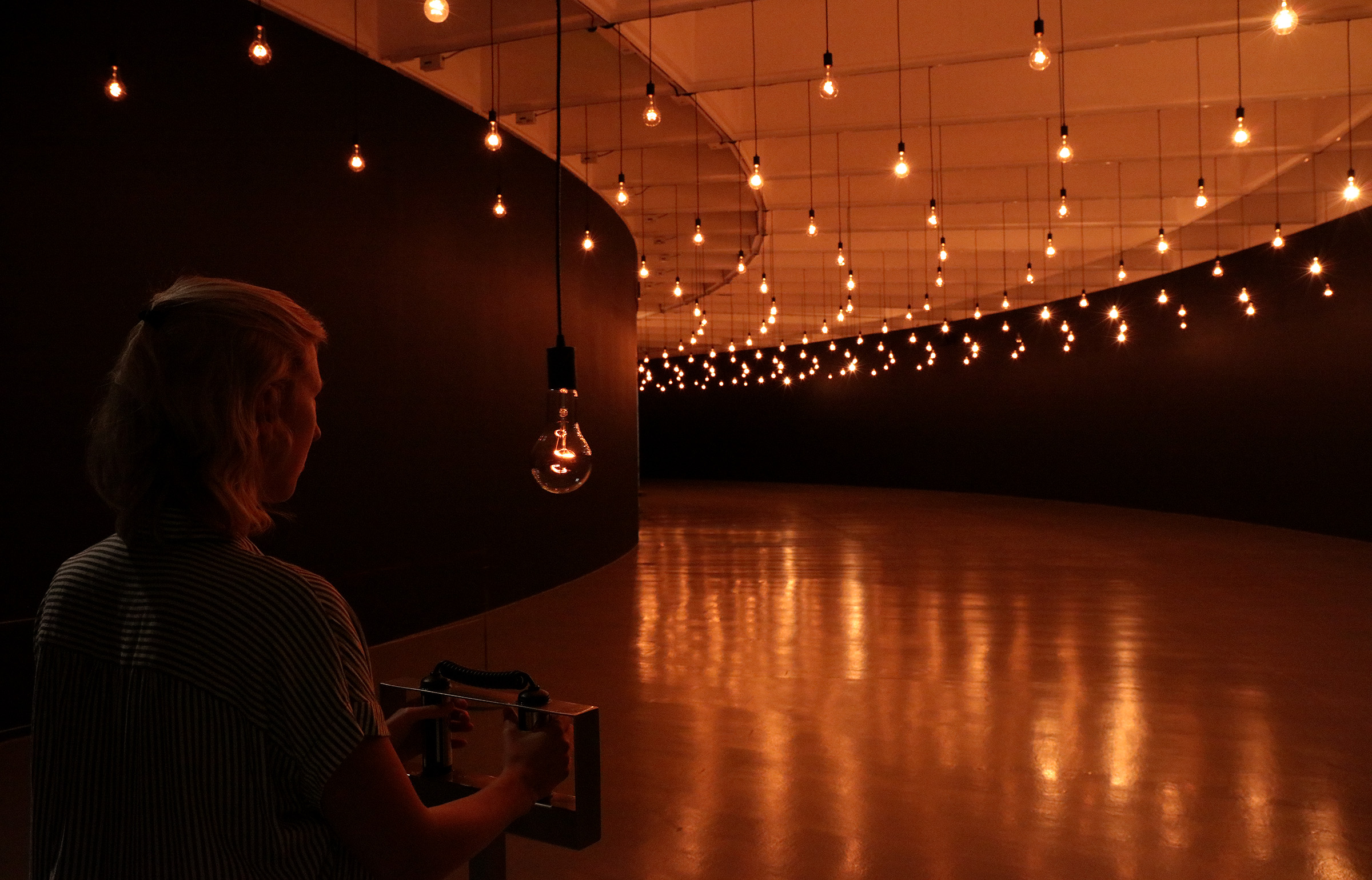Mexican-Canadian artist Rafael Lozano-Hemmer has been making his D.C. debut with Pulse Series exhibit since November 1, 2018, through April 28, as part of the Hirshhorn’s largest interactive technology exhibition so far. Lozano-Hemmer is known for his works that combine art, technology, and design.
“Lozano-Hemmer fills the Museum’s entire Second Level with immersive environments that use heart-rate sensors to create kinetic and audiovisual experiences from visitors’ own biometric data. Over the course of six months, Pulse will animate the vital signs of hundreds of thousands of participants,” according to the exhibit brief.
The artist focuses on engaging with the audience through his artworks. His installations capture biometric signatures, visualizing them as repetitive sequences of flashing lights, panning soundscapes, rippling waves, and animated fingerprints.
“These intimate ‘portraits,’ or ‘snapshots,’ of electrical activity are then added to a live archive of prior recordings to create an environment of syncopated rhythms. At a time when biometry is increasingly used for identification and control, this data constitutes a new way of representing both anonymity and community,” the brief adds.
The exhibit begins with Pulse Index (2010) which is presented at its largest scale to date. The second work, Pulse Tank (2008) is an updated and expanded version for this exhibition. Pulse Room (2006) features hundreds of clear, incandescent light bulbs hanging from the ceiling in even rows, pulsing with the heartbeats of past visitors.
“You can add your heartbeat to the installation by touching a sensor, which transmits your pulse to the first bulb. Additional heartbeats continue to register on the first bulb, advancing earlier recordings ahead one bulb at a time. The sound of the collected heartbeats join the light display to amplify the physical impact of the installation,” explains the exhibit brief.
Three short documentaries of Pulse works which show the breadth of the series through video footage of various other biometric public-art interventions in Abu Dhabi, Toronto, Hobart, New York, and Urdaibai, Spain (2007–2015) are also part of the exhibition.
The exhibit is curated by Stéphane Aquin and curatorial assistance is provided by Betsy Johnson.
Cuban Artist Zilia Sánchez’s Exhibition at Phillips Collection from February 16

